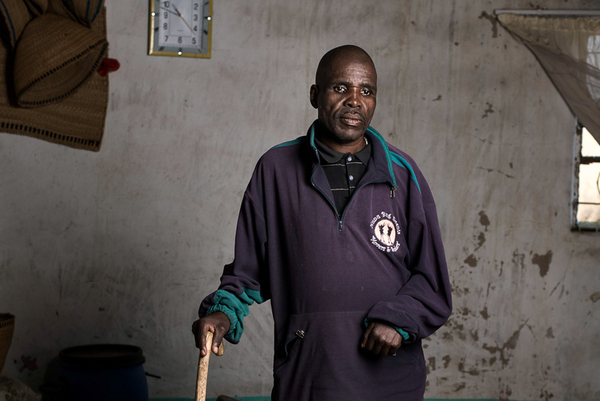Silicosis: mining companies hit back in court

Allowing the miners in the landmark silicosis case to act as a class on behalf of other miners would be contrary to the interests of justice, lawyers for the gold mining companies argued yesterday.
The miners argue that the gold mines did not take the necessary steps to protect them from silicosis and tuberculosis caused by exposure to silica dust underground. They are asking the court to certify a class action which would allow them to claim damages on behalf of tens of thousands of other miners affected by these diseases since 1965 and the families of miners who died of silicosis or TB.
The case entered its fourth day on 15 October, with advocates for the mining companies arguing that the court should not certify a class action.
Representing Harmony Gold, Advocate Chris Loxton, said certification as a class action would not serve the interests of justice because the miners involved did not have the same history. Each mineworker claiming membership of a certified class would have to have worked in one or more of the listed mines involved the litigation. This meant that if certification was granted, claimants who had worked in other mines, shafts or sections would have to wait while the courts examined conditions where each miner had worked from time to time.
The mining companies would also be burdened by a trial over facts and circumstances “pertaining to tens if not hundreds of unique mines, shafts and sections that they have never owned, operated or been responsible for,” Loxton said.
Both the mining companies and the claimants would have to tolerate examination of the standards and practices of all the mines involved, from training courses and methods of mining to health and safety policies and procedures which might have varied across mines and shafts over time.
Also, if issues of conduct, negligence, wrongfulness and causation were to be tackled at the first stage of class proceedings, the extraordinary overall inconvenience to plaintiffs was inescapable.
“If this was the problem, wouldn’t the court be able to say that the particular class action ends at this particular date?” Deputy Judge President Phineas Mojapelo asked. Loxton agreed.
“If you had opportunity to answer, when would you say the cut-off date of the class would be?” Judge Bashier Vally asked.
Loxton responded, “I’d say it shouldn’t be there at all.”
“However desirable it might seem to resolve many claims by plaintiffs in one go”, he said, “divergent facts and circumstances characterising all or most of them render a class action prejudicial to applicants and respondents alike and therefore contrary to the interests of justice.”
Speaking of his client, Harmony Gold, Loxton argued that there had been complex restructuring in the mining industry, with parent companies selling former subsidiaries, former subsidiaries merging with other companies or buying mines or parts of mines (typically a shaft and the surrounding ore body) which they owned and control directly.
This meant that even where an individual had been employed in a single mine, shaft or section for a significant period of time, Loxton argued, the company responsible for health and safety standards in operation might have changed. This made it almost impossible to determine which company, if any, should be liable for damages due to exposure to silica dust, he said.
Advocate Fanie Cilliers, for Anglogold Ashanti, also argued that there was not enough “commonality” for certification as a class.
He said a class action was only appropriate when it was possible to arrive at common answers, based on common proof, that could resolve all or most of the issues central to each claimant’s case.
But in this case the miners who would be in the “class” had worked on different mines, in different places, which had been owned, operated, controlled and advised by different companies, during different periods of time, in different geological circumstances, under different mining practices and/or legal regimes. This meant that each miner’s claim would depend on the examination of different facts. The number of permutations of evidence would run into millions, he argued.
“This application would never have got off the ground in the US,” said Cilliers.
Support independent journalism
Donate using Payfast

Don't miss out on the latest news
We respect your privacy, and promise we won't spam you.
Next: Try getting an ambulance in this part of Grahamstown
Previous: Black Sash steps up ‘Hands off our grants’ campaign

This article is licensed under a Creative Commons Attribution-NoDerivatives 4.0 International License.
